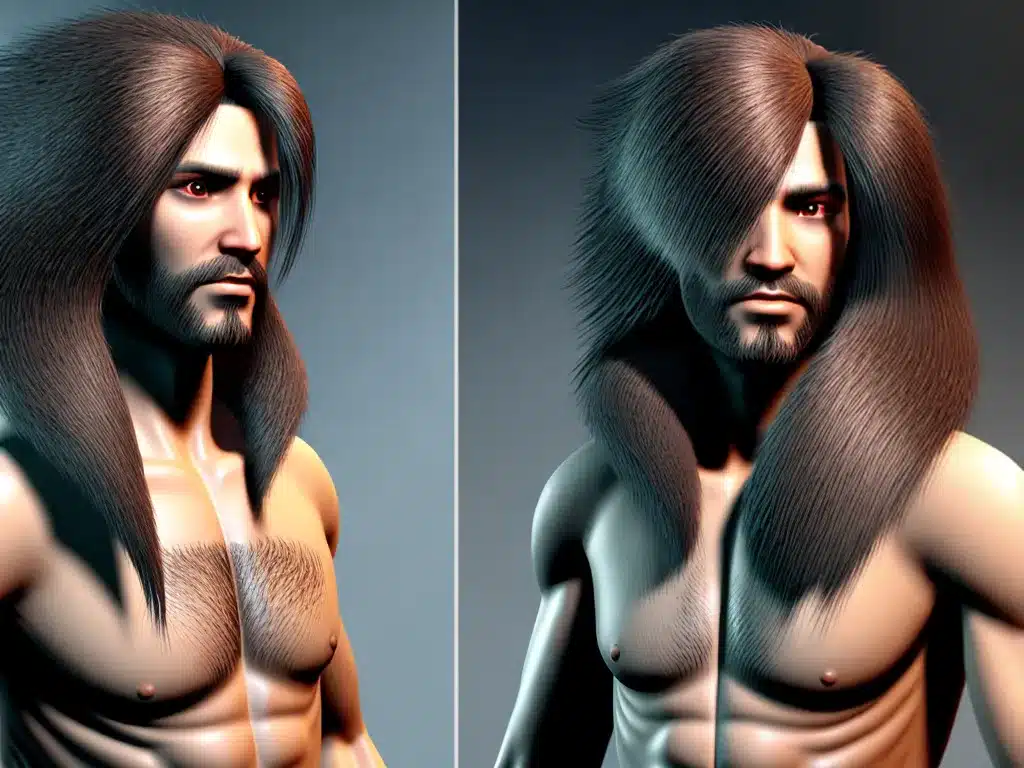
Introduction
Real-time hair and fur simulation in video games has come a long way in the last decade. As graphics and compute power on consumer devices improve, game developers are able to create more believable and realistic hair and fur for characters and creatures in games. Accurate simulation and rendering of hair and fur adds greatly to the level of realism and immersion in modern games. Some of the key advances that have enabled more realistic real-time hair and fur simulation are:
Improvements in Hair Modeling and Dynamics
Strand-Based Hair Modeling
Earlier games used simplified hair shapes and textures to depict hair on characters. Modern games can model individual strands of hair more accurately using strand-based hair modeling. Each strand is modeled as a chain of connected line segments with certain physical properties like mass, stiffness, etc. This allows for modeling hair movement and interaction between strands more realistically.
Better Hair Dynamics Simulation
With individual hair strands modeled, the motion and dynamics of hair can be simulated more accurately in real-time. Techniques like verlet integration, implicit Euler integration, and use of springs and dampers have enabled better simulation of hair dynamics and motion. Effects like hair blowing in wind, responding to character movements, etc. look more natural.
Procedural Hair Generation
Earlier, hair models needed a lot of manual artist input. Now procedural methods are used more extensively to automatically generate large number of individual strands with randomized properties. This reduces the artist workload significantly.
Improvements in Fur Modeling and Rendering
Layered Fur Modeling
Inspired by how real fur works, modern games model fur as multiple translucent layers. The base consists of longer guide hairs. Layers of shorter fur filaments rendered on top create the soft furry look. This enables more efficient rendering than modeling all fur strands explicitly.
Advanced Shading and Light Scattering
The interaction of light with fur layers is handled more accurately now. Effects like subsurface scattering, shadowing and self-shadowing greatly improve the appearance of fur. Fur appears soft, voluminous and realistic.
Texture and Normal Map Blending
Normal maps are used to add appearance of smaller micro-scale details on fur without heavy geometry. Careful blending of normal maps from multiple fur layers creates convincing fur detail. Other maps add variation in fur color, highlights, etc.
Optimized, Scalable Implementations
While the hair and fur modeling, dynamics and rendering techniques have grown more advanced, optimized GPU implementations have also been created to make them perform in real-time even on consumer devices. Some examples are:
- Level of detail techniques to simulate only prominent hair strands at higher detail
- Asynchronous generation of hair and fur models using multiple CPU/GPU threads
- GPU compute techniques like compute shaders for efficient simulation
- Optimized shaders and rendering techniques to visualize hair and fur efficiently
Examples of Great Real-Time Hair in Games
Some games that really showcase the current state of real-time hair and fur simulation are:
- Red Dead Redemption 2: Extremely realistic and detailed hair simulation using strand-based modeling and advanced shading.
- Horizon Zero Dawn: Beautifully rendered protagonist hair and detailed fur simulation for robotic creatures.
- The Last of Us 2: Impressive strand-based hair modeling and simulation along with top-notch shading.
- Marvel’s Spiderman: Challenging simulation of full head of hair along with other cloth simulation while swinging.
As the examples above show, continued advances in real-time hair and fur simulation technology are enabling game developers to reach new levels of realism and immersion in games. This field continues to be an active area of graphics research and development.
The Future
Some areas of focus for future improvements in real-time hair and fur simulation include:
- More accurate simulation of hair and hair-to-hair interactions
- Developing hair models that are robust and stable over long simulations
- Scaling up hair and fur simulation complexity in open-world games
- Improving hair rendering and shading to handle wider range of lighting
- Developing flexible hair authoring tools for more artist control
- Exploring the use of machine learning to generate and simulate hair
With consumer compute power and machine learning performance continuing to grow over time, it is an exciting time for advances in real-time hair and fur simulation for games. Stunning levels of realism can be expected in the future as these areas continue to evolve.












